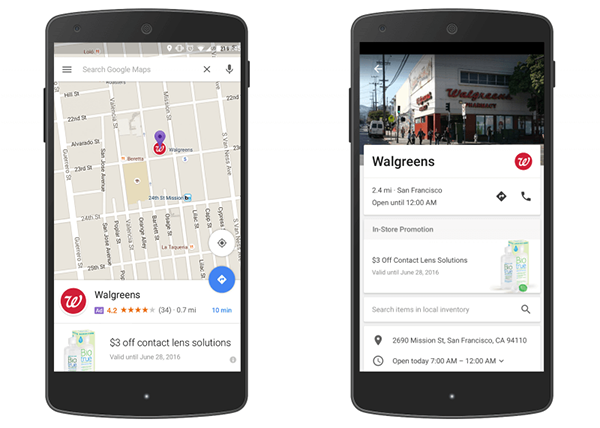Weekly Marketing Update for March 3, 2020
The big digital marketing news from this past week involves a few apps and services most Americans couldn’t imagine living without: Uber, Lyft, and Google Maps. Find out how these platforms are innovating and bringing new advertising opportunities to local businesses.
Uber & Lyft start using car-top digital billboards
Remember taxis? Well, think about the last time you saw a taxi. Remember those small billboards that you would see on top of the cabs?
Now imagine a digital version on top of your next Uber or Lyft ride. What you’re picturing is the next foray into the advertising market, smart car-top digital billboards.
If you’re wondering if people still pay attention to billboards today, the data shows that people are paying attention to these ones.
One real-life example involves ad company Vistar Media who ran a campaign, which used these car-top digital billboards in an effort to promote the home release of an unidentified movie to “comic fanboys.” The advertiser first identified their ideal audience—frequent visitors of comic stores and comic-related events, as well as people who had seen the movie in theaters—and then tracked that audience and displayed the car-top ads in places their target audience was most likely to visit, like malls and transit stations.
The outcome? Vinstar Media saw awareness rise by 13% and purchase intent rise by 26%.
If you had to compare these car-top billboards to what you’re already used to seeing in the world of online advertising right now, think real-life banner ads with geo-targeting. Not only can these car-top digital billboards display ads to the right space, but Uber’s and Lyft’s data infrastructures could be a valuable asset for those trying to literally map out a customer’s journey.
What’s so special about these new billboards-on-wheels?
These car-top digital billboards are interesting because they combined the best of both worlds of offline and online marketing—these ads are highly visible to potential customers as they go about their daily lives, yet they’re also able to leverage data from smartphones (such as a user’s demographics, location, online behaviors, etc.) to reach a hyper-targeted audience and deliver a more personalized experience. These billboards can also adjust their ads based on variables like time of day, such as by showing ads for a nearby coffee shop in the morning and a new, local steakhouse in the evening.
Whether or not these new car-top billboards will actually be effective or whether they’re just some interesting gimmick in an attempt to generate some short-term revenue has yet to be seen, but they’re definitely an interesting new development to have on your radar!
Google ramps up advertising in Maps & gets big results for big brands
If you’re like most Americans, you prefer to use a real-time navigation app over stopping and asking for directions. So, you have probably already seen ads like Google Maps’ promoted pins (branded location marketers) and business profile ads (listing-type ads) when trying to do something like picking up cold medicine at the nearest Walgreens.

In 2018, Google Maps launched an ad format called Local Campaigns in an effort to help drive users of the app to local businesses. Since then, Google has added more capabilities to these ads, as they now show up along the user’s route, and they also offer more “local actions,” allowing users to call the featured business directly within the app, according to Business Insider.
Two large brands, Dunkin’ and Walgreens, say they have seen great success with Google Maps’ Local Campaigns. Walgreens was able to more than double its store visit conversions from a sunscreen ad campaign in Google Maps, and Dunkin’ saw store visits increase by 11% after using these ads to promote a new espresso drink.
With the latest developments with Google Maps ads, Google is becoming even more of a powerhouse in the digital advertising landscape.
Consider this data shared by Business Insider:
Why does the increased investment in Google Maps advertising mean for businesses?
As consumers continue to gravitate toward ads that are personalized to their location and their in-the-moment needs, Google Maps ads are a valuable opportunity for businesses to reach potential customers in the right place at the right time. With a well-thought-out strategy in place using Google Maps ads, businesses have the potential to reach potential customers with a high level of intent, allowing them to attract more calls, more foot traffic, and more new business.
Want more helpful marketing insights that you can use to grow your business? Stay tuned on our blog for our Weekly Marketing Updates!


.jpg)

